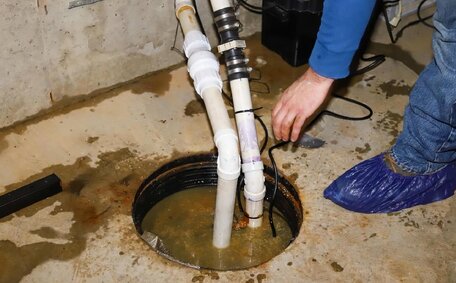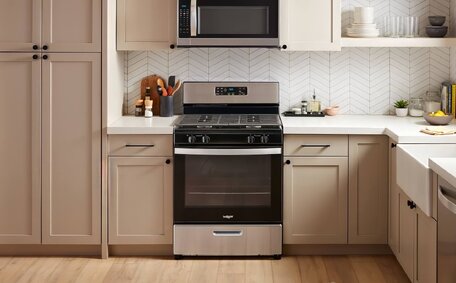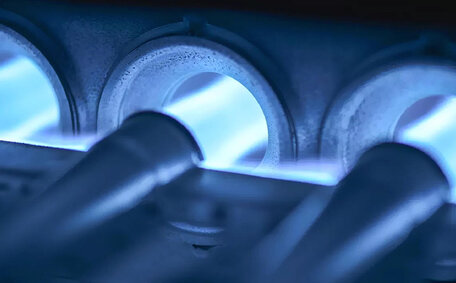Introduction: Dealing With No Hot Water Frustrations
Discovering there’s no hot water for your morning shower or daily chores is more than inconvenient; it hinders essential activities like cooking and cleaning. If you’re experiencing hot water issues, don’t hesitate to contact us for assistance.
The good news is that there may be an easy fix - this guide will take you through various troubleshooting tips to help get your hot water system up and running again.
We’ll look at potential causes like tripped circuit breakers, pilot light issues, gas valve problems, and more. Make sure safety always comes first when investigating electrical or gas appliances, exercising caution accordingly.
Some issues with gas and electric heaters may be resolved through home maintenance, but complex problems necessitate a licenced professional. Should your DIY efforts fail to restore hot water, it’s time to call in the experts for an accurate diagnosis and effective solutions.
They can fix the issue efficiently and advise on water tank replacement options if needed.
Let’s begin investigating some potential reasons for loss of hot water in your home.
Checking Basic Issues First
When troubleshooting a lack of hot water your system may experience, it’s important to check for any visible issues first. Carefully inspect the hot water system, including pipes, valves, and tanks for signs of damage or leaks that may cut off hot water coming out. Exercise safety - if dealing with gas lines or electrical connections, shut off water and power supplies first.
Verify that any gas valves feeding your water heater are turned to the open position. You should check see if the pilot lights are lit if applicable. Ensure the hot water system is switched on and hasn’t simply been turned off accidentally.
One of the easiest fixes can be resetting a tripped circuit breaker that provides power to an electric hot water system. Locate the circuit breaker box and switch the tripped breaker fully off and then on again, which can reset so that hot water can continue flowing to your system.
Low water pressure or inlet valve problems can also hinder water flow. Opening taps to release trapped air or cleaning filter screens may help restore regular pressure and prevent blocked drains.
It’s essential to begin with basic troubleshooting; if the hot water supply doesn’t resume, enlist a plumber to thoroughly assess your system.
Testing Circuit Breakers and Pilot Lights
If you have an electric hot water system, an easy first step is to check your circuit breaker that helps heat up your hot water has tripped. Given that electric water heaters can represent over 20% of a home’s energy use in Australia, a tripped breaker is a common reason for water supply interruption.
Locate your property’s circuit breaker box once and identify the breaker specifically labelled for the hot water system. Consider contacting an electrician if this happens frequently, as it may indicate a wiring issue.
If the hot water is restored, the tripped breaker was likely the culprit.
For gas hot water systems, inspect the pilot light located under the outer casing. Refer to manufacturer guidelines, but typically you must:
- Turn off the gas supply valve on the gas line leading to the water heater.
- Remove the outer panel to expose the pilot light assembly.
- Check if the pilot light is out or requires relighting as per instructions.
- Replace the outer panel and turn the gas supply back on once relit.
Should the pilot light extinguish again or the hot water supply not resume, contact us for service; there may be a deeper issue requiring repair.
Inspecting for Leaks and Testing Water Pressure
Regular inspections of your hot water system and its plumbing for leaks are essential. Carefully check pipes, joints, valves, and connections to ensure the water your hot water heater produces reaches all outlets like taps and showers inside the home.
A water leak will often be visible, with water droplets or pooling evident. But also look out for more subtle signs like unexplained damp or mould patches on walls and ceilings. If you find a leak, try and determine where it originates from.
If it’s on the water supply lines to or from your tank, shut off water supply at the mains before attempting to temporarily patch or seal the leak.
Pressure should be in the range of 350-500 kPa. Consistently low readings under 300 kPa can prevent sufficient hot water flow.
Significant leaks or continuous water flow from the relief valve, along with persistent low water pressure even after taps are shut off, indicates a fault that necessitates urgent professional assistance. A gas leak represents an extreme danger - evacuate the area immediately and contact emergency services if you suspect gas leaks around a hot water system.
Common Causes and Solutions for Loss of Hot Water
There are several common reasons why a household’s hot water supply may suddenly cease:
Gas Supply Issues
For gas water systems, diminished gas pressure may extinguish the pilot light or hinder the burner’s reheating capability. Check your gas metre to see if supply is still active. Contact your gas utility company if in doubt.
Heating Element Failure
Over time, Continually powering off your electric water heater without resolution may suggest heating element failure. Have a licenced electrician inspect elements and advise if requiring replacement.
Pilot Light Outage
As covered earlier, pilot lights on gas systems need to stay lit to function. Refer to relighting steps or call a plumber for repeat issues.
Thermostat Malfunction
If a faulty thermostat is suspected, it may be failing to signal the pilot light or activate the heating element. A professional assessment is needed to determine if replacement is necessary.
Insufficient Water Pressure
Check water pressure as previously outlined. Low readings under 300 kPa can prevent hot water flow even if the system is working. Contact a plumber to inspect pipes and valves if pressure issues persist.
Should your troubleshooting not restore hot water, it’s advisable to consult licenced plumbers or electricians. They can conduct thorough system inspections and repairs for both gas and electric units to diagnose and remedy intricate issues.
Troubleshooting Electric Water Heaters
Electric water heaters have a multitude of components that can fail, potentially leading to the need for a new hot water system. Focus troubleshooting on the key elements:
Heating Element
The rod-shaped heating element’s role is to heat the water inside the tank. Check for visual damage or corrosion. Have a licenced electrician replace if faulty.
Employ a multimeter to gauge resistance; readings at the extremes suggest malfunctions.
Thermostats
Thermostats regulate temperature via sensors. If water won’t heat to the set level, the thermostat may be defective. An electrician can verify accuracy and replace parts as needed.
Electrical Connections
Inspect all wiring for damage, signs of overheating or loose connections. Electricians can redo terminations or replace cabling. Remember to check your isolator switch too, which, if not set to “on”, can cause unnecessary disruptions.
Additional troubleshooting steps for electric water heaters include:
- Hit the reset button if your system has one. Leave powered off for 10 minutes first.
- Consider draining and flushing older units encrusted with scale deposits.
- Have an electrician ensure suitable circuit breaker, fuse, and wire ratings.
Given that electric water heaters account for a significant portion of household energy usage, persistent electrical issues may necessitate replacing the entire unit.
Troubleshooting Gas Water Heaters
Gas water heaters have fewer components than electric heaters, making troubleshooting a bit simpler. However, caution is still required when dealing with gas appliances.
Inspecting Gas Lines
Verify that gas lines leading to the water heater have consistent pressure without any disruptions. Consult your gas utility company if the pilot light won’t stay lit despite relighting attempts.
Testing the Pilot Light
Inspect the colour and consistency of the pilot light flame. It should burn bright blue at full flame. Smaller, unstable flames, or those burning yellow or orange indicate ventilation issues.
Examining the Burner
Use a mirror to view the burner assembly without removing the outer casing. Check for any debris blocking ports or openings. Dust buildup can affect efficiency.
Checking Flue Venting
Ensure ventilation flue piping isn’t kinked or blocked. Proper venting is vital for gas water heater functionality. Have a licenced plumber assess issues.
For recurring pilot light issues or suspected gas leaks, promptly seek professional help due to the associated safety risks.
When Professional Help is Needed
There comes a point during hot water troubleshooting when DIY efforts are insufficient to properly diagnose and resolve the issue. Contact a licenced plumber right away if you experience any of the following:
- Repeated pilot light outages on a gas system warrant professional intervention.
- Suspected gas leaks coming from the hot water heater or connected gas lines
- Significant water leakage from the water heater itself or inlet/outlet pipes
- Inability to relight the pilot light after multiple attempts
- Hot water supply not resuming despite troubleshooting efforts
- Consistently low water pressure readings under 300 kPa
Our team at Paddington Plumbing are your local fully licenced gas fitters and plumbers serving homeowners in Paddington and surrounding suburbs of Sydney. With over 25 years of experience, we can efficiently diagnose tricky no hot water your system may encounter. For prompt assistance from our friendly, local experts, contact us on 1300 349 338 or email [email protected].
Emergency Repairs and Tenant Rights
As a tenant, you have certain rights when it comes to emergency repairs needed for vital services like hot water supply. Under most residential tenancy laws across Australia, hot water is considered an urgent essential service that landlords must restore promptly.
In New South Wales, landlords and managing agents are obliged to arrange emergency repairs within 24 hours as per the Residential Tenancies Act, with the loss of hot water supply falling within this mandatory response period.
If service has not resumed within a day after reporting hot water issues to your landlord or agent, ensure you follow up with written communication. Keep notes detailing all communication attempts. Ultimately, you can seek assistance from NSW Fair Trading to compel emergency repairs be carried out if unreasonable delays continue.
Paddington Plumbing reminds both tenants and landlords operating in the Paddington area that prompt hot water repairs benefit all parties. We’re available 24/7 to offer diagnosis and solutions if hot water troubleshooting assistance is needed.
Replacing a Faulty Water Heater
There are a few key reasons why replacing your faulty or failing hot water system may be necessary:
Age and Longevity
The typical lifespan of water heaters ranges from 8 to 12 years. As water heaters age, they may develop leaks, pressure issues, and decreased heating efficiency. It’s prudent to consider a replacement for water heaters beyond the 10-year mark.
Extensive Damage
In some cases, attempted DIY repairs or serious component damage means water heater replacement is the only viable solution. Signs like rusted internal tanks, significant elemental deterioration, and continuous pilot light failures indicate the appliance is beyond further repair.
Better Efficiency
Choosing an energy-efficient model to replace an outdated system can save on monthly energy bills. Modern water heaters offer superior insulation, precision thermostats, and performance enhancements that older units lack.
When opting for a new hot water solution, take into account variables like fuel type, whether you desire a tank or tankless model, and the tank size suitable for your household’s size and daily usage. Installation is complex, so always engage certified gas fitters or electricians to safely remove old systems and fit new replacement heaters.
The team at Paddington Plumbing have over 20 years of hot water system replacement experience. Contact us on 1300 349 338 for advice and quotes on installing new water heaters optimised for your home’s needs.
Maintaining Your System
Regular assessments of your hot water system, such as inspecting the inlet valve, are crucial for its longevity and avoiding sudden malfunctions. Simple annual inspections allow plumbers to check components for corrosion, scale buildup, leaks, and other signs of deterioration.
For gas water heaters, examining internal parts like pilot assemblies, burners, and ventilation flues catches problems before they become bigger issues. Electric water heaters should have heating elements and wiring inspected. Plumbers can also drain and flush mineral deposits from the tank.
Replacing sacrificial anode rods in tanks is key to preventing corrosion. These rods attract damaging electrons away from the tank lining. If severely corroded, they no longer protect the tank walls from rusting through.
Paddington Plumbing’s certified technicians provide comprehensive preventative maintenance services, as DIY upkeep of hot water systems is not recommended. We specialise across all residential and commercial plumbing areas - from routine inspections to repairs and new installations.
Contact our friendly team on 1300 349 338 to book annual maintenance or replacement quotes if your existing hot water system shows signs of age or declining performance.






